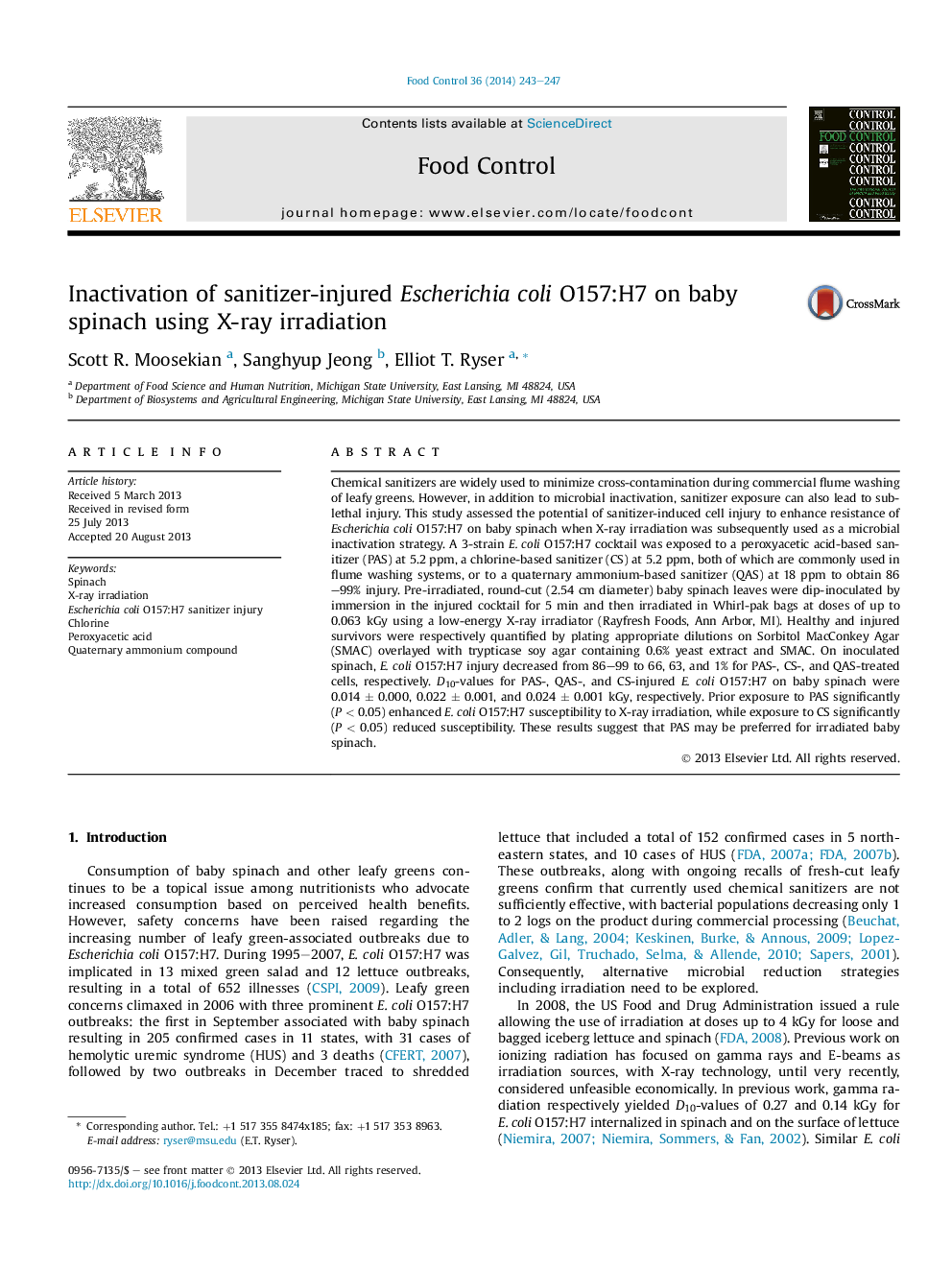| Article ID | Journal | Published Year | Pages | File Type |
|---|---|---|---|---|
| 6392148 | Food Control | 2014 | 5 Pages |
â¢X-ray irradiation resistance of sanitizer-injured Escherichia coli was assessed on spinach.â¢Chlorine injury enhanced E. coli O157.:H7 resistance to x-ray irradiation.â¢Peroxyacetic acid injury decreased E. coli O157.:H7 irradiation resistance.â¢Peroxyacetic acid-based sanitizers are recommended for irradiated baby spinach.
Chemical sanitizers are widely used to minimize cross-contamination during commercial flume washing of leafy greens. However, in addition to microbial inactivation, sanitizer exposure can also lead to sublethal injury. This study assessed the potential of sanitizer-induced cell injury to enhance resistance of Escherichia coli O157:H7 on baby spinach when X-ray irradiation was subsequently used as a microbial inactivation strategy. A 3-strain E. coli O157:H7 cocktail was exposed to a peroxyacetic acid-based sanitizer (PAS) at 5.2 ppm, a chlorine-based sanitizer (CS) at 5.2 ppm, both of which are commonly used in flume washing systems, or to a quaternary ammonium-based sanitizer (QAS) at 18 ppm to obtain 86-99% injury. Pre-irradiated, round-cut (2.54 cm diameter) baby spinach leaves were dip-inoculated by immersion in the injured cocktail for 5 min and then irradiated in Whirl-pak bags at doses of up to 0.063 kGy using a low-energy X-ray irradiator (Rayfresh Foods, Ann Arbor, MI). Healthy and injured survivors were respectively quantified by plating appropriate dilutions on Sorbitol MacConkey Agar (SMAC) overlayed with trypticase soy agar containing 0.6% yeast extract and SMAC. On inoculated spinach, E. coli O157:H7 injury decreased from 86-99 to 66, 63, and 1% for PAS-, CS-, and QAS-treated cells, respectively. D10-values for PAS-, QAS-, and CS-injured E. coli O157:H7 on baby spinach were 0.014 ± 0.000, 0.022 ± 0.001, and 0.024 ± 0.001 kGy, respectively. Prior exposure to PAS significantly (P < 0.05) enhanced E. coli O157:H7 susceptibility to X-ray irradiation, while exposure to CS significantly (P < 0.05) reduced susceptibility. These results suggest that PAS may be preferred for irradiated baby spinach.
